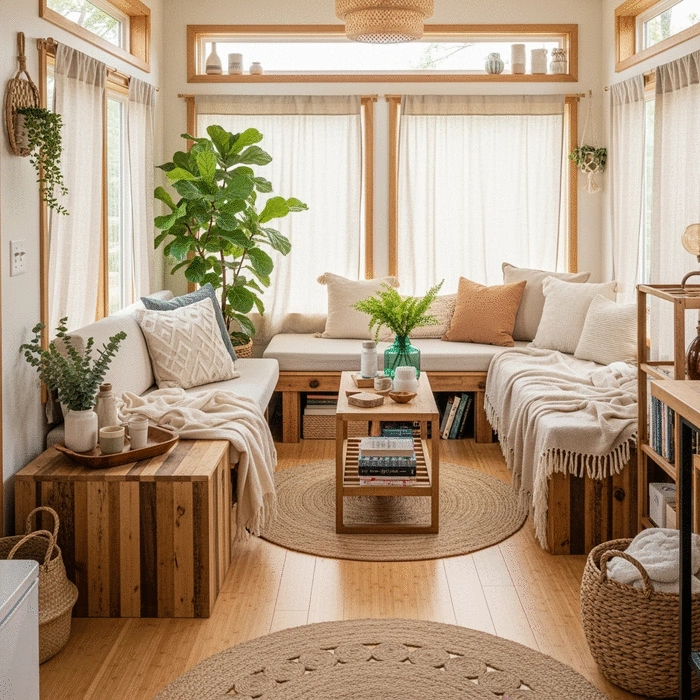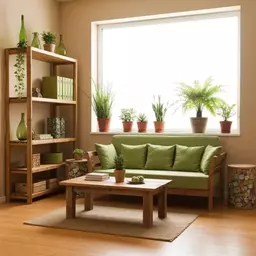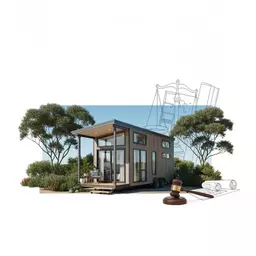Reducing Waste
Sustainable materials are often recycled or repurposed, significantly reducing landfill contributions.
Get expert advice, innovative design ideas, and practical tips for your tiny home journey in Australia.
Posted on: 2025-10-27
By: Sophie Marchant
Did you know that the materials you choose for your tiny home can significantly impact both your living experience and the environment? As the tiny house movement grows, so does the importance of selecting sustainable materials that align with eco-friendly practices. Here’s how you can create a meaningful, comfortable space while minimizing your environmental footprint.
Understanding the positive impacts of using sustainable materials can greatly enhance your tiny home design experience. For more insights on making informed choices, consider exploring our guide on choosing your ideal tiny home.
Sustainable materials are often recycled or repurposed, significantly reducing landfill contributions.
Many sustainable materials improve energy efficiency, which is essential for tiny homes.
Using non-toxic materials promotes better indoor air quality, contributing to overall well-being.
Sustainable materials often last longer, reducing the need for frequent replacements and repairs.
As someone passionate about sustainable living and the tiny house movement, I believe that the materials we choose for our tiny homes can significantly impact both our living experience and the environment. When we talk about sustainable materials, we're referring to products that contribute to a healthier planet, whether through their production processes, longevity, or their recyclability. This commitment to eco-friendly living is not only a trend but a necessity for those of us looking to minimize our impact on the Earth while enjoying meaningful, comfortable spaces.
In this journey toward a sustainable lifestyle, understanding the essence of sustainable materials is crucial. These materials often come from renewable sources, are free from toxic chemicals, and can be recycled at the end of their lifecycle. By selecting these eco-friendly options, we support a healthier environment and elevate our tiny home design to reflect our values of simplicity and conscientiousness.
Sustainable materials are not just buzzwords; they embody a philosophy of living that prioritizes environmental stewardship. These materials often include:
By defining what sustainable materials are, we can better appreciate their importance in tiny home design. They enable us to create spaces that reflect our commitment to eco-friendly practices while still being stylish and functional. For more ideas on how to incorporate these into your design, check out our article on space-saving tiny house designs.
Why does sustainability matter in tiny home design? Well, it’s all about creating a balance between living comfortably and responsibly! Here are a few key reasons:
At The Tiny Living Guide, I emphasize the significance of adopting sustainable practices in our homes. With the right materials, we can create not just a dwelling but a sanctuary that resonates with our values—one where every detail is intentional and meaningful.
Now that we've laid the groundwork for understanding sustainable materials, let’s delve into some of the top choices that can transform your tiny home into an eco-friendly haven. Choosing the right materials is vital to ensuring your tiny space is both functional and aligned with your sustainable values.
Did you know? When selecting sustainable materials for your tiny home, consider using local resources. Sourcing materials from local suppliers not only reduces your carbon footprint associated with transportation but also supports your community's economy. Plus, you'll often find unique, region-specific options that can add character and authenticity to your space. For more detailed guidance, explore our comprehensive guide on selecting materials for tiny homes.
Embracing sustainable design in your tiny home is easier than you might think! With a little guidance and inspiration, you can transform your space into an eco-friendly haven. Here, I’ll share some practical steps that will help you choose the right sustainable materials and create a beautiful, sustainable interior that reflects your values.
First things first! It’s essential to understand your design needs and the materials available to you. This is where I recommend making a comprehensive list of options that align with your goals. By taking the time to evaluate your choices, you can ensure that each element contributes positively to your tiny living experience.
Let’s break down the process into manageable steps. Following these steps will guide you in selecting the best materials for your tiny home interior:
By following these steps, you can make informed decisions that align with your sustainable living journey! As the founder of The Tiny Living Guide, I can assure you that thoughtful planning is key. You might also find inspiration in our article on eco-friendly colors for tiny homes to further enhance your sustainable design.
If you’re feeling a bit stuck, visual inspiration can be incredibly helpful! I love exploring different designs and materials that highlight sustainability. Here are some suggestions for visuals to enhance your tiny home projects:
These resources can spark creativity and help you envision your dream tiny home! Remember, the goal is to create a space that not only looks good but also feels good.
When it comes to finishes, choosing low-VOC paints and non-toxic options is a game changer for your health and the environment. These products reduce harmful emissions, making your tiny home a safer place to live. Here are some benefits:
When selecting these products, look for credible certifications that indicate low VOC levels. It's a simple step that makes a big difference in your tiny home.
Choosing non-toxic finishes doesn't have to be overwhelming! Here’s a simple guide to help you through the process:
By taking these steps, you’re ensuring that your tiny home is not only beautiful but also a safe haven for you and your loved ones. For further reading on creating an eco-conscious living space, consider this eco-conscious living guide.
Here is a quick recap of the important points discussed in the article:

 What if your small living space could also be a sanctuary for the planet? Embracing sustainability n
What if your small living space could also be a sanctuary for the planet? Embracing sustainability n
 As the tiny home movement gains momentum in Australia, the legal landscape can feel daunting. Howeve
As the tiny home movement gains momentum in Australia, the legal landscape can feel daunting. Howeve
 Did you know that zoning laws can significantly impact the feasibility of sustainable housing initia
Did you know that zoning laws can significantly impact the feasibility of sustainable housing initia